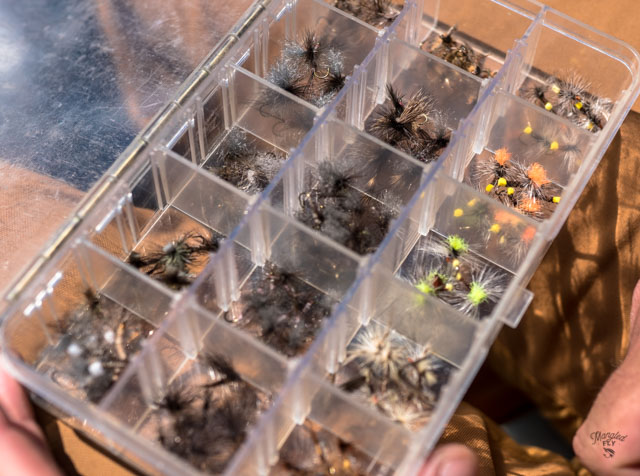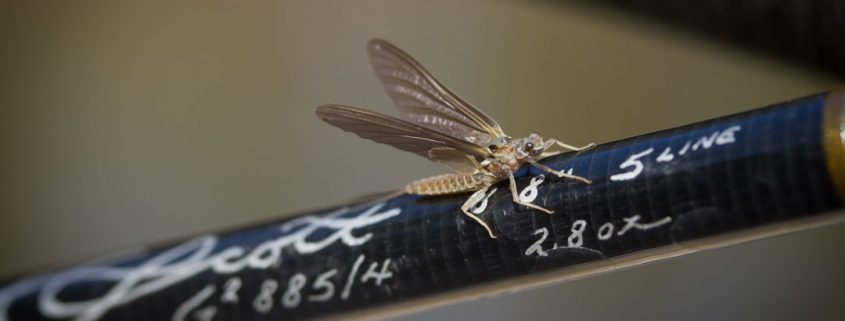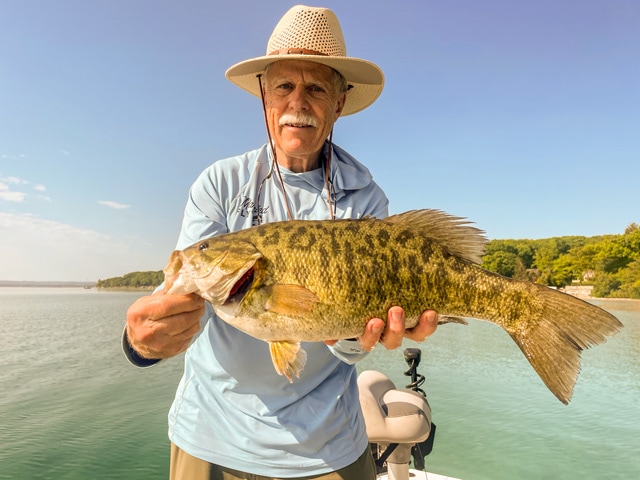Prepping for Trout Opener
Trout Opener
With the Michigan Trout Opener quickly approaching, are you ready and prepped for Trout Opener? It seems like a simple question, but there is a series of steps you can follow. My hope here is to outline some routine things I do while prepping for Trout Opener. Spending a few short hours inspecting my gear contributes to my overall success, especially on the Upper Manistee. The goal here is to eliminate the obvious shortfalls that will hinder positive outcomes.
Fly Box Organization
Most of us spend our winter tying flies to bulk up our fly inventories. This is a great way to pass the idle winter months and it gives us something constructive to do. One important step you can take while prepping for Trout Opener is to organize your fly boxes by “hatch”.
I typically organize my fly boxes around a single “hatch”. For example, I have one box entirely focused on the Hendrickson hatch. Another box for Sulphurs, and so on and so forth. In each of these “hatch” boxes I will have an assortment of nymphs, emergers, duns, and spinners. I always try to have the appropriate size and color to match each hatch stage. Having all of my fly choices laid out in front of me is a good way to determine if my fly selection has any shortfalls.
Another recommendation is to carry a second box containing basic “attractor” patterns. This box should have an assortment of your favourite old stand-byes. I like the classics such as the Adams, Robert’s Yellow Drake, Borcher’s Drake, Stimulators, and Elk Hair Caddis. Organizing my fly boxes in this manner allows me to make better choices in the heat of the moment. While transitioning from one hatch to another just replace the previous “hatch” box from your vest or boat bag with the next series of flies.

Leader Prep
The ultimate goal here is to simplify the leader choices while prepping for Trout Opener. Everyone has their own opinion regarding leader materials and Tippett. So we don’t need to delve into a dissertation here regarding which Market Brands you should choose. What Brand of leader material you choose ultimately boils down to personal preference. Base your decision on your overall confidence in the materials available on the market today. I tend to side towards knotless tapered leaders for simplicity and consistency in my rigging.
Following the KISS (Keep It Simple, Stupid) concept, I prefer to use leaders in 6-7 ft. lengths. This one size fits all scenario only requires me to add Tippett as needed to achieve my desired length. Usually I will have 3x and 1x leaders on hand. I will often purchase 2x-5x Tippett material of the same Name Brand. Keeping the brand of Tippett and leader material in the same family is important for knot integrity. Not all leader and Tippett materials are the same. So unless they are made in the same factory, I would consider this a precautionary tip when purchasing! Another important thing to note here is to avoid using fluorocarbon Tippet and Leaders while Dry Fly fishing. Nylon monofilament materials float better and ride higher in the water column, making them the preferred choice.
One last tip, , learn to tie one knot and tie it well! This was something my grandfather preached and it has always stuck with me. There are a lot of great knots you can use to connect Tippett, leader, and fly line. Find one knot that you can tie effectively for each connection. Then practice tying those knots before heading to the stream.
Cleaning Your Gear
Fly line selection is an important consideration when it comes to fly presentation. There are countless fly line tapers and configurations available on today’s market. The choices are often overwhelming to consider. What if I told you that cleaning your fly line is the most important aspect to your overall success? At today’s retail prices replacing your fly line every year becomes an expensive endeavor. Compare that with the cost effective alternative of purchasing a Fly Line Cleaner. Spending a few minutes cleaning your lines before you head to the water should be an everyday ritual. Giving your lines a thorough cleaning before the upcoming season will improve its overall performance. You don’t want your floating line to sink while fishing Dry Flies! Conditioning your line before each trip will also prevent cracking and will prolong its ability to float.
Guide Hacks
Here are a couple of “guide hacks” you can use in a pinch if your line isn’t performing well. Consider carrying a zip lock bag with some Armor All Wipes. I will use these wipes on the front portion of the fly line if it begins to sink. Another trick I use is to apply a Silicone Gel Floatant to the area of the line that is problematic. It’s not a permanent fix, but it can keep your fly line floating during a hatch.
Make sure not to get any floatant on your leader. This will prevent the leader from settling into the surface film making it more visible to the fish. As an added side note, most floatants can leave an opaque residue on your leader. This residue can become quite noticeable to the naked eye in colder temperatures. If you get floatant on your leader I recommend trying to wipe it off with a clean cloth. The colder stream water will make your leader more visible to the fish if you don’t.
Waxing Your Ferrules
Now that you have cleaned your fly lines, here is one more consideration in prepping for Trout Opener. I highly recommend cleaning and waxing your fly rod ferrules frequently. I see more rods break due to loosened ferrules! They twist and separate during normal fishing activity creating a weak spot in the junction. This where a rod most often breaks when it comes under a heavy load. Dirt and sand can also cause damage to your ferrules and your fly rod’s finish. When a foreign object like a grain of sand gets into the Ferrule it can scratch the finish. These scratches ultimately create a weak spot that will become stressed over time.

Using a Q-tip or pipe cleaning material to remove any sand and dirt particles prior to cleaning should be routine. Our Michigan Trout Streams are characterized by heavy sand bed loads and sand will find its way into everything! Once I have cleaned all the joints I will apply Paraffin Wax to the male ends of each Rod section before twisting them together.
Waxing your Ferrules provides a dual benefit to your fly rod’s performance. It will keep the spine of the rod aligned improving casting performance and preventing twisting and loosening while fishing. Secondarily, there is an added benefit at the end of the day as well. Waxing your ferrules makes disassembly easier when you are getting ready to travel home. I always carry some wax in my vest or boat bag and reapply as necessary.
Ready for Trout Opener
I hope these simple tips will offer you some assistance in prepping for Trout Opener and your next outing. Taking a few minutes to organize and clean your gear can save you some downtime from a mishap. It can also prevent you from forgetting something of relative importance. I hope everyone is looking forward to the upcoming season as you begin prepping for Trout Opener. I know we are prepping with great anticipation! Enjoy the Opening weekend traditions and we look forward to seeing everyone on the water. Each season I look forward to exploring the many great fishing opportunities that Michigan has to offer.
Tight Lines,
Ed





Comments are closed.